#mysterious georgian mansion london
Photo
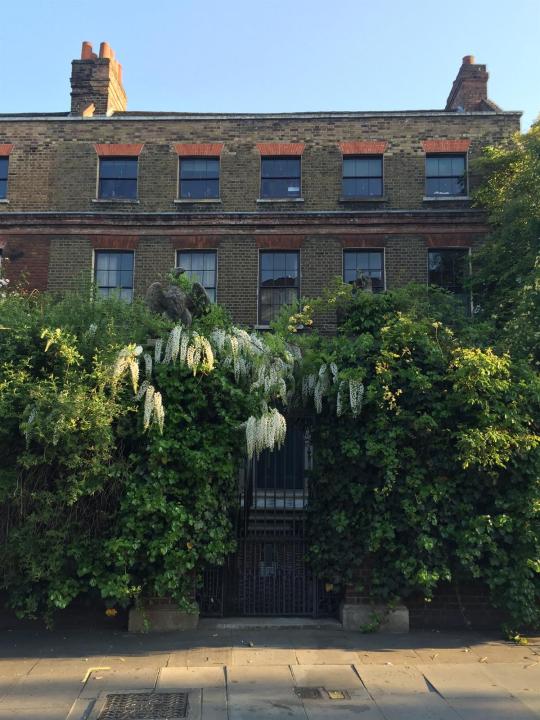

Let’s tour the most mysterious house in London. After being uninhabited for over a century Tim, a museum director, and Todd, a landscaper, bought the huge Georgian mansion from the Spitalfields Trust for only £250,000. It is now the most superbly restored, privately owned Georgian house in the country.

Over three centuries, the house had been extensively altered. It was divided up into smaller lodgings and two shops were built in the old front garden. Most of the property became storage for the shops when Tim & Todd came along.

Guided by historic documentation and surviving evidence, the shops were demolished, revealing the house surprisingly intact, and this is what it looked like when they restoring it.

Philippe Debeerst, the photographer, described it as spellbinding. Hieroglyphics lined the entrance hall wall.

Have you ever seen a fireplace like this? I can’t believe they were able to light it- after all these years, it still worked.
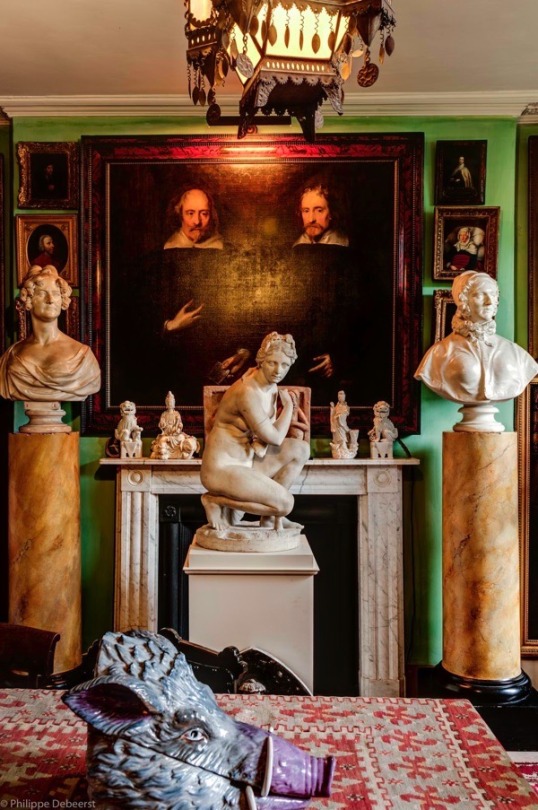
Both Tim and Todd are avid collectors.


They love having the opportunity to expand their collections.

This restored sitting room looks cozy.

Their dining room.


Look at how cool the old kitchen is.

This is an interesting skeleton and it even has an egg.
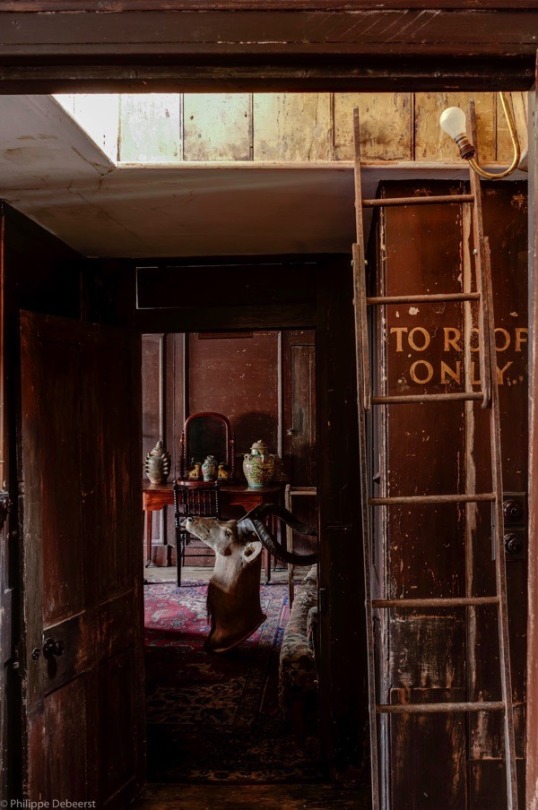
Really, I think the stores were a good thing- the house was pretty well-preserved behind them.

Can you believe all their stuff?

They’ve got the bathrooms up and running (and decorated).

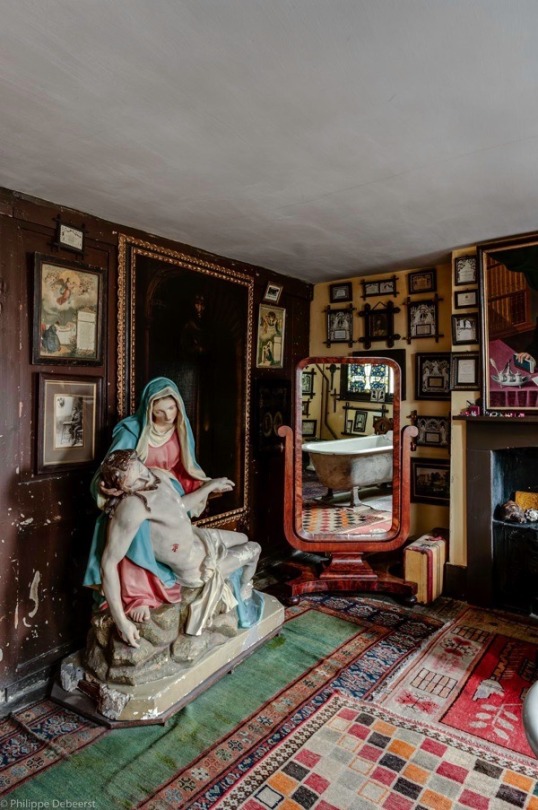
They also have a large religious collection.
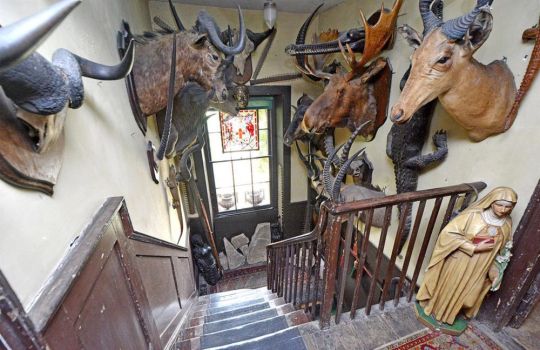
I wonder if these heads came with the place.

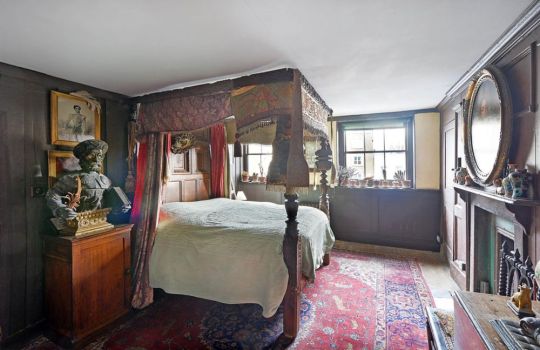
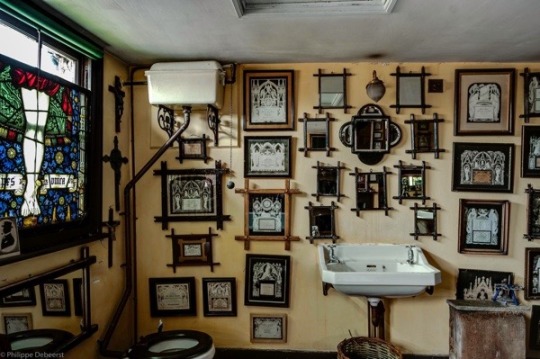

This bedroom and bath turned out beautifully.
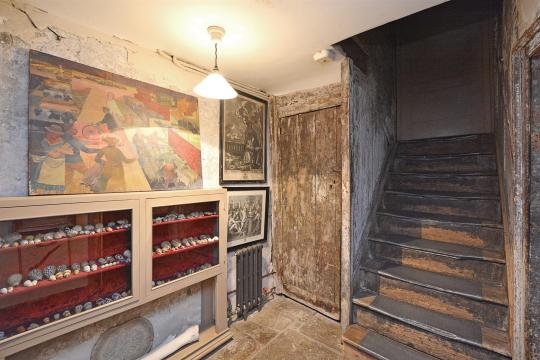

This looks like a basement room.
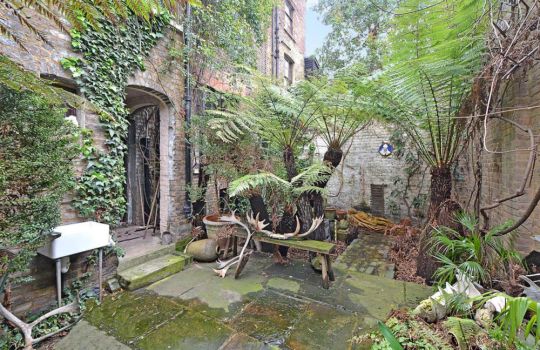

Todd working on the garden.
https://spitalfieldslife.com/
307 notes
·
View notes
Photo

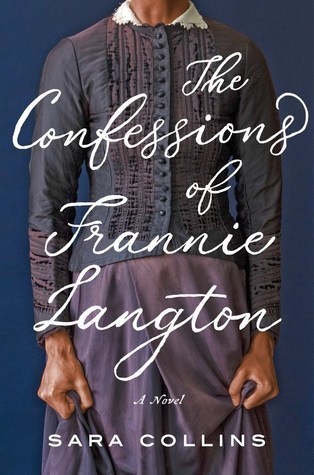


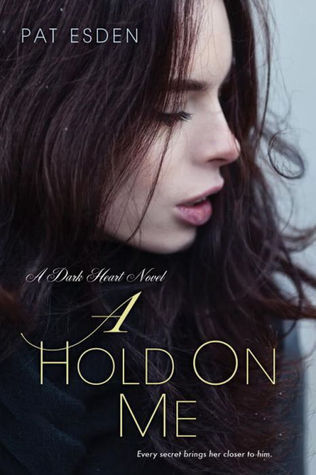


Gothic Mysteries: a reading list
The Confessions of Frannie Langton by Sara Collins
A servant and former slave is accused of murdering her employer and his wife in this astonishing historical thriller that moves from a Jamaican sugar plantation to the fetid streets of Georgian London--a remarkable literary debut with echoes of Alias Grace, The Underground Railroad, and The Paying Guests.
All of London is abuzz with the scandalous case of Frannie Langton, accused of the brutal double murder of her employers, renowned scientist George Benham and his eccentric French wife, Marguerite. Crowds pack the courtroom, eagerly following every twist, while the newspapers print lurid theories about the killings and the mysterious woman being held in the Old Bailey.
The testimonies against Frannie are damning. She is a seductress, a witch, a master manipulator, a whore.
But Frannie claims she cannot recall what happened that fateful evening, even if remembering could save her life. She doesn’t know how she came to be covered in the victims’ blood. But she does have a tale to tell: a story of her childhood on a Jamaican plantation, her apprenticeship under a debauched scientist who stretched all bounds of ethics, and the events that brought her into the Benhams’ London home—and into a passionate and forbidden relationship.
Though her testimony may seal her conviction, the truth will unmask the perpetrators of crimes far beyond murder and indict the whole of English society itself.
Stalking Jack the Ripper by Kerri Maniscalco, James Patterson
Presented by James Patterson's new children's imprint, this deliciously creepy horror novel has a storyline inspired by the Ripper murders and an unexpected, blood-chilling conclusion...
Seventeen-year-old Audrey Rose Wadsworth was born a lord's daughter, with a life of wealth and privilege stretched out before her. But between the social teas and silk dress fittings, she leads a forbidden secret life.
Against her stern father's wishes and society's expectations, Audrey often slips away to her uncle's laboratory to study the gruesome practice of forensic medicine. When her work on a string of savagely killed corpses drags Audrey into the investigation of a serial murderer, her search for answers brings her close to her own sheltered world.
The Truth of All Things by Kieran Shields
Two hundred years after the Salem witch trials, in the summer of 1892, a grisly new witch hunt is beginning....
When newly appointed Deputy Marshal Archie Lean is called in to investigate a prostitute's murder in Portland, Maine, he's surprised to find the body laid out like a pentagram and pinned to the earth with a pitchfork. He's even more surprised to learn that this death by "sticking" is a traditional method of killing a witch.
Baffled by the ritualized murder scene, Lean secretly enlists the help of historian Helen Prescott and brilliant criminalist Perceval Grey. Distrusted by officials because of his mixed Abenaki Indian ancestry, Grey is even more notorious for combining modern investigative techniques with an almost eerie perceptiveness. Although skeptical of each other's methods, together the detectives pursue the killer's trail through postmortems and opium dens, into the spiritualist societies and lunatic asylums of gothic New England.
Before the killer closes in on his final victim, Lean and Grey must decipher the secret pattern to these murders--a pattern hidden within the dark history of the Salem witch trials.
A Hold on Me by Pat Esden
She never wanted to return.
He wants nothing more than for her to leave.
But the fire between them is as strong as the past that haunts them.
Annie Freemont grew up on the road, immersed in the romance of rare things, cultivating an eye for artifacts and a spirit for bargaining. It's a freewheeling life she loves and plans to continue--until her dad is diagnosed with dementia. His illness forces them to return to Moonhill, their ancestral home on the coast of Maine--and to the family they left behind fifteen years ago, after Annie's mother died in a suspicious accident.
Once at Moonhill, Annie is shocked when her aunt separates her from her father. The next time Annie sees him, he's a bizarre, violent shadow of his former self. Confused, she turns to an unlikely ally for support--Chase, the dangerously seductive young groundskeeper. With his dark good looks and powerful presence, Chase has an air of mystery that Annie is irresistibly drawn to. But she also senses that behind his penetrating eyes are secrets she can't even begin to imagine. Secrets that hold the key to the past, to Annie's own longings--and to all of their futures. Now, to unlock them, she'll have to face her greatest fears and embrace her legacy…
The Forbidden by F.R. Tallis
1873: When the ambitious Doctor Paul Clement takes a job on the island of Saint Sebastien, he has dreams of finding cures for tropical diseases. After witnessing the ritualistic murder of a young boy who was allegedly already dead, he is warned never to speak of what he has seen. Back in fin de siecle Paris, Paul's attentions turn to studying the nervous system and resuscitation through electricity. Paul is told of patients who have apparently died, been brought back to life, and, while they lay between life and death, witnessed what they believed to be Heaven itself. Using forbidden knowledge he swore never to use, he attempts to experience what everyone else has seen, but something goes horribly wrong. When Paul returns to the land of the living, can it be possible that he brings something else back with him, an unspeakable evil so powerful it can never be banished?
House of Secrets by V.C. Andrews
Ever since Fern could remember, she and her mother have lived as servants in Wyndemere House, the old Gothic mansion of the Davenport family. She may have been a servant, but Fern developed a sweet friendship with Dr. Davenport's son, Ryder, and she was even allowed free range of the estate.
But Dr. Davenport has remarried and his new wife has very different ideas about a servant's place. Now Fern and her mother are subject to cruel punishments, harsh conditions, and aren't even allowed to use the front door.
Yet, for all her wrath, the cruel woman cannot break the mysterious bond between Ryder and Fern. And when Ryder invites Fern to join his friends at prom, there's nothing Mrs. Davenport can do to stop them nor can she continue to guard the secret that haunts the women of Wyndemere—but there's nothing she won't try.
After all, reputation is everything.
#mystery#mystery books#new adult#YA books#book recs#reading recommendations#library#reading list#currently reading#tbr#romance#fiction#gothic fiction#new adult books#reading recs#mysteries
6 notes
·
View notes
Text
So you want to read something like Jane Austen?
I see lots of posts where people answer this question with recommendations for classic historical romance authors like Georgette Heyer or more modern bodice-rippers like Julia Quinn or Tessa Dare. But to me that’s never quite the appropriate answer. Sure, if what you want is romance with country dancing and breeches, that’s fine, but surely if you want to read more things similar to Jane Austen, the best way to do that is to delve into her lesser known contemporaries. People Austen admired and people who admired her. People writing on similar themes and using similar language.
So this is my list of 10 novels from the 18th and early 19th century that you might like to try if you’ve read Austen and want to branch out more. These are just personal recommendations and based off what I’ve read; I’m very happy to hear other suggestions!
Worth noting as well that all of these are available online or free for kindle download. :)
1. Evelina, or the History of a Young Lady's Entrance into the World by Fanny Burney (1778)
Summary: Evelina Anville is a shy, innocent country girl who is invited to London by friends. Here, she attempts to navigate the complicated social mores of the season while keeping her integrity. She encounters handsome men, vulgar relations and gets into numerous alarming and hilarious scrapes along the way to discovering her true noble heritage and winning the love and hand of the charming Lord Orville.
Why you should read it: A great first novel for Austen fans to get into who aren’t otherwise familiar with literature of the period. Burney’s first novel is sparkling, witty, filled with dialogue and not very long. The humour is more robust than Austen’s - it’s definitely Georgian rather than Regency - but a lot of the scenarios will be familiar to Austen readers. Particularly recommended for fans of Northanger Abbey, Sense and Sensibility and Pride and Prejudice and readers who like historical romances set during the London season.
2. Cecilia, or Memoirs of an Heiress by Fanny Burney (1782)
Summary: Cecilia Beverley is an orphaned heiress who will only inherit her fortune on the very specific condition that her husband takes her name. Until she turns 21 she is left with three very different guardians - the profligate Mr. Harrell, the proud Mr. Delvile, and the vulgar Mr. Briggs. Cecilia must protect herself from the advances of the unscrupulous fortune hunters she meets and deal with her feelings for young Mortimer Delvile, whose family is excessively proud of its ancient name.
Why you should read it: IMO Cecilia is a masterpiece. It’s a much longer and complex novel than Evelina but it contains fierce social satire and commentary of a world where women are horribly vulnerable and money rules all interactions pointing forwards to authors like Dickens and Eliot. Burney is a little more moralistic and less witty here but it’s a fascinating portrayal of a highly intelligent and capable, independent woman in a world where she is constrained by the men around her, in the kind of plot that romance novelists can only dream of. It’s also worth noting that Pride and Prejudice was arguably written as a response to Cecilia and it is very interesting to spot and consider the ways in which Austen was explicitly influenced by this novel and what she changed in writing Pride and Prejudice. Particularly recommended for fans of Pride and Prejudice and Emma. Please note that this novel contains a suicide and (period appropriate) mental illness.
3. Belinda by Maria Edgeworth (1801)
Summary: Belinda Portman is sent to live with the fashionable Lady Delacour in London with whom she develops a strong friendship. Part of the plot deals with Lady Delacour’s fear that she has breast cancer and part with the customary romantic entanglements of a young girl out in the London season.
Why you should read it: Maria Edgeworth was one of the most popular novelists of Austen’s day - and was far more commercially successful. Belinda is her second novel and has been compared to Austen for its natural portrayal of character. Lady Delacour is the most interesting character - a slightly older woman, independent, strong-minded and fearless. Particularly recommended for fans of Persuasion, Lady Susan, Sanditon and of potentially queer subtext, intriguing references to interracial marriages (look it up!) and 18th century surgery.
4. Patronage by Maria Edgeworth (1814)
Summary: A magnum opus almost Dickensian in scale charting the rises and falls of two neighbouring families, the hard-working and virtuous Percy family and the ambitious, scheming Falconers. The daughters need marriages, the sons need careers and the paterfamilias of each family must make tough decisions about what he wants his family to stand for.
Why you should read it: This novel is admittedly a brick and tough to get through at times but it really is worth it. You are plunged into Regency society in a way no other contemporary novel succeeds in with a large and varied cast of characters. The novel also takes you into the world of men and their professions in a way that Austen never does. Particularly recommended for fans of Mansfield Park (which was published in the same year) and people who want to learn more about Regency society in all its forms.
5. Rob Roy by Walter Scott (1817)
Summary: Romantic Frank Osbaldistone leaves his father’s business in London to visit his cousins in north England where he meets and falls in love with the beautiful and charming Diana Vernon, gets caught up in a Jacobite plot and the scheming of his wicked cousin, Rashleigh, and meets the famous Scottish outlaw, Rob Roy.
Why you should read it: There were several Scott novels that could be included here but I picked Rob Roy for its attractive portrayal of Diana, since Scott is not always great at writing 3D heroines Austen fans will like. Scott was the most successful novelist at the time, bursting onto the novel scene writing novels with a male protagonist at a time when most novels were by, for and about women. Scott and Austen admired each other a great deal despite writing in very different genres, with Scott writing historical romances rather than contemporary social satires. Particularly recommended for fans of Persuasion, Northanger Abbey and Pride and Prejudice.
6. The Mysteries of Udolpho by Ann Radcliffe (1794)
Summary: Set vaguely in the 16th century, this most famous gothic novel follows the adventures of Emily St Aubert from her father’s French estate to Venice with her aunt, Madame Cheron after he dies and then, when her aunt marries the sinister Montoni, to his castle in the Italian Apennines.
Why you should read it: C’mon, it’s Udolpho! Don’t you want to know what’s behind the infamous black veil? Northanger Abbey will be 10 times better once you’ve read Udolpho and despite the excessive amount of fainting, overuse of the word “sublime” and far too many spontaneous reciting of poetry, it’s a genuinely engaging adventure novel with larger-than-life characters, daring adventures, and some really beautiful descriptions of France and Italy. Particularly recommended for fans of Northanger Abbey, obviously.
7. Nightmare Abbey by Thomas Love Peacock (1818)
Summary: Utterly ridiculous gothic satire with a tenuous plot about a morose widower who lives with his son, Scythrop, in a crumbling mansion in Lincolnshire, but you’re not reading this for the plot.
Why you should read it: I read it for university, having never heard of it before, and found it hilarious. Published in the same year as Northanger Abbey, it is similar in poking fun at gothic conventions. It depends on a reasonable knowledge of gothic novels and contemporary literature and philosophy so not a novel for beginners to undertake unless you have an edition with a commentary, but it’s very short and absolutely absurd. Particularly recommended for fans of Northanger Abbey and the Juvenilia.
8. Pamela, or Virtue Rewarded by Samuel Richardson (1740)
Summary: Pamela is a maid in Mr. B’s house and must use all her ingenuity to fend off her employer’s advances and convert his many and increasingly desperate attempts to seduce her into a marriage proposal.
Why you should read it: Pamela was a sensation when it was first published. Written in the form of letters, it was arguably the first novel to really get into the brain of a young woman and was quite radical in its treatment of the relationship between the sexes, consequently being highly influential on subsequent novels. Any of Richardson’s novels could deserve a place here - Clarissa is arguably his best but it’s ridiculously long and I haven’t read it, and Sir Charles Grandison was apparently Austen’s favourite novel but I also haven’t read it. Pamela is probably the most approachable but please note, in case the summary didn’t set off enough alarm bells, its depiction of consent is very much of its time. Particularly recommended for fans of the literary culture into which Austen was born.
9. Marriage by Susan Ferrier (1813)
Summary: Lady Juliana rather foolishly elopes with an impoverished Scot and must adapt to living in his rundown estate in the Highlands. The first half of the novel deals with Juliana’s comic attempts to deal with this rough kind of living while the second half, set 17 years later, follows Juliana’s daughter, Mary, a virtuous girl, who goes to live in Bath with her cousins, including the “naughty” Adelaide.
Why you should read it: Ferrier was another author much more popular than Austen at the time. Marriage is similar to Burney and Edgeworth in its plots and scopes and there are moments when she almost reaches Austen’s wit. It is, however, rather more heavy-handed in its obvious morality and in the way it contrasts its good heroine and bad (but far more appealing) anti-heroine. Very typical of women’s novels of the time. Particularly recommended for fans of Sense and Sensibility and Mansfield Park.
10. St Ronan’s Well by Walter Scott (1824)
Summary: This novel follows Francis Tyrell and his attempts to marry his former love, Clara Mowbray, and fend off his rival, the engaging but sinister Lord Etherington. All of this is set under a backdrop of the gossip and scandal-mongering of a fictional Scottish spa town.
Why you should read it: This is a self-indulgent inclusion - I wrote my dissertation on it, Scott’s least known and least loved novel. It’s Scott’s only attempt to write a contemporary novel and it is obvious that he is influenced by Austen and trying in many ways to emulate her. It’s not entirely successful and the novel is an uneasy mix of sparkling dialogue and social satire with melodrama and romantic tragedy. The characters are really great, however, particularly Scott’s portrayal of Clara’s deep unhappiness, and the plot quite shocking- make sure you get hold of a first edition or at least read up on it, as Scott was later forced to remove his earlier references to pre-marital sex, which is really key for the plot. Particularly recommended for fans of Emma, Mansfield Park and Persuasion.
#Jane Austen#literature#books#booklr#Fanny Burney#Maria Edgeworth#Ann Radcliffe#Walter Scott#Thomas Love Peacock#Susan Ferrier#Samuel Richardson#Pride and Prejudice#Sense and Sensibility#Mansfield Park#Emma#Northanger Abbey#Persuasion#Evelina#Cecilia#Belinda#Patronage#Rob Roy#The Mysteries of Udolpho#Nightmare Abbey#Pamela#Marriage#St Ronan's Well
3K notes
·
View notes
Photo

Glockenspiel
Part 1/? - Transmission
Part 2/? - The Sandhill Hotel
Part 3/? - Piccadilly
Part 4/? - The Future
Part 5/? - Too Late
Part 6/? - The Mystery of the Missing Time Machine
Part 7/? - Underway
Part 8/? - The Sierra Bunker
Part 9/? - Cross-Country
Part 10/? - The Pit
Part 11/? - Calls for Help
Part 12/? - Campout and Reunion
Part 13/? - Apocalypse Bunker
Part 14/? - Terrible Truths
Part 15/? - Library Crystals
Part 16/? - The Stark Gallery
They landed at LaGuardia, where they had a quick (and expensive) lunch, and visited a kiosk to get Peggy and Howard a second set of cell phones before catching a train into the city. Peggy’s impression of twenty-first century London had been of the city she remembered but somehow more so, bigger and brighter and busier than ever before. Manhattan was, if anything, an even more extreme example. The streets were teeming with cars, dogs, and people. New, shiny buildings stood side-by-side with ones nearly a hundred years old. And like the familiar buildings in London, it hadn’t aged particularly well. Plaster was peeling and pavement was cracked, as if the entire island were crumbling away under the weight of all this human activity.
In the midst of all that, it was a bit unbalancing to find that the Fifth Avenue façade of Howard’s old mansion hadn’t changed a bit. It looked exactly as it had during the brief time Peggy and Angie had lived there – a mix of Georgian and Neoclassical architecture that probably looked refined to anybody who didn’t know the difference between the two. The magnolia trees had grown but they’d been lovingly pruned, and there were different flowers in the garden but the beds were in the same place. It looked as if Peggy could move right back in.
Except, of course, for the giant banner advertising a new exhibit of Jackson Pollock, and the massive queue of people waiting to get in. Those were very definitely new.
“That’s a hell of a thing to see,” Howard muttered, as they got in line. “A hundred people just waiting to get into your house.”
“Are you telling me that’s never happened before?” Peggy asked, skeptical.
“Those were reporters,” Howard told her. “Not members of the public.”
Peggy looked at the crowd of people waiting, and then at Toulouse herself, with blue and green locks falling out from under her knitted cap. It would be silly to keep Toulouse and Kevin out when all these other civilians were coming in, and Toulouse herself looked determined. Peggy had a feeling if she told her no, there’d be a fight.
“Not now,” she decided, “but this is just a scouting-out trip. Once we have a plan for what to do next, we may ask you to leave.” They probably wouldn’t have to worry about anything more dangerous than security guards, but Peggy wasn’t going to take that for granted. HYDRA might be able to find this place, too. They might even have followed them here.
“Let me know if I can help,” said Toulouse firmly.
While the main façade faced Fifth Avenue, the actual entrance to the mansion was on East Seventieth Street. Toulouse paid admission for four and then stepped into the main foyer, where Peggy discovered that Toulouse had not been joking about the interior having been preserved with its original décor. Even the wallpaper was, while not exactly what she remembered, certainly a very close replica. The coat check and small gift shop were on the right, and on the wall across from them was a large framed photograph of a family posing in the portico.
“Son of a bitch,” Howard said under his breath, and walked towards it.
The photo was in colour, and printed very large – nearly three feet tall, which rendered the image a little grainy up close. Even so, there was no mistaking the identity of the largest figure. It could only possibly be Howard himself.
Peggy came closer, too, to see how her friend had changed over the years. He definitely looked older, thinner, and more tired. His mustache was a little bushier and his hair had gone gray, and he looked more deathly serious than she could ever remember seeing him. Standing on his right and smiling gently was an attractive blonde woman, at least twenty years younger than he. Her hair fell long around her shoulders and she was dressed in a dark skirt suit and pearls. Between the adults was a little boy, three or four years old. He had a mop of dark hair and serious brown eyes, and looked stiff and uncomfortable in his little suit and tie.
There was a brass plaque below the picture. It said, Howard, Maria, and Anthony Stark, September 1973.
“So that’s them, eh?” Howard murmured.
“So it is,” Peggy agreed.
It was a strange thing to see, she thought. Toulouse had mentioned that Howard would get married, but here was the proof, staring back at them across forty years. His wife, Maria, was very much Howard’s type – a petite blonde with a pretty face and a charming smile. Peggy wondered what was different about this one. What had made Howard decided that out of all those little blondes, this was the one he wanted to spend the rest of his life with?
Howard must have been thinking the same thing. “I wonder what she was like,” he said. “I wonder where I met her.”
“It might say on your Wikipedia article,” Toulouse suggested from behind him.
“Yeah,” Howard said distantly, and Peggy could tell that he wasn’t going to look. He didn’t want to know. Why would he? Who wanted to know that here was the love of their lives, forever beyond their reach?
Peggy knew that feeling all too well. It still came over her every so often, usually in the middle of the night when she couldn’t sleep. She’d told herself again and again that she was over Steve, that she couldn’t dwell on what might have been – she’d told Jason that, and it had been good advice for him as it was for her, but there was a part of her heart that just wasn’t willing to take it. Daniel had asked Peggy if she still loved him and she’d had to say yes, she always would. She knew better than to let it interfere with the rest of her life and relationships, but she was very much still in love with Steve Rogers.
Kevin and Toulouse were hanging back now, not wanting to interrupt. Peggy herself was of two minds about it. If they stayed here staring for two long, somebody might wonder why, but Howard was having to contemplate an entire life he could never live. A wife he would never meet, a son he would never hug… he would need time to cope with that. Peggy hoped they had that time.
Finally, Howard tore himself away, with honest pain in his face that he couldn’t quite hide by forcing himself to smile. “Okay,” he said. “The vault entrance will be in the library.”
“Wasn’t it in the music room?” asked Peggy with a frown. Howard had used the library. The music room was only there because fancy houses were supposed to have one.
“It was, but when I decided to hide it better I planned to move the door,” he explained. “If I got on with that, it’ll be in the library.”
The music room was circular, and was now used as an exhibit of antique instruments, including an eighteenth-century cello and a white-lacquered grand piano. They looked like the sort of things Howard would collect just because rich people were supposed to collect things. A doorway from there led into the library, which was where most of the crowd was. Not only was it home to several rare books, but the featured exhibit of three paintings by Pollock were hanging on the far wall. These were not particularly impressive as far as Peggy could tell. They all looked like they’d been made by simply throwing paint at a canvas.
Howard took no interest in the art at all. He turned immediately to the right, where the library shared a wall with the music room – the fact that the latter was round left a wedge-shaped space between them. A large Indian rug was hung there, with a plastic panel in front of it so that people couldn’t touch.
“Is this the place?” Peggy asked. Based on her memory of the music room entrance, it did seem right.
“Should be,” Howard said. “Looks like they re-wallpapered, or maybe I did that. Either way, hides the entrance completely. If I can just find the seam in the plaster…” he reached to touch the wall.
“Sir,” a security guard stepped forward. “You’re not allowed to touch that.”
Howard looked at the man and began drawing himself up to his full height, and a horrible mental picture flashed through Peggy’s head. He’d forgotten the situation, and was about to tell the guard that he could touch whatever he wanted in his own house. She grabbed his arm to drag him away.
“There’s a sign right there, Honey,” she said, in an American accent. “I know it’d look nice in your study, but I’m sure it’s not for sale. Right?” She smiled at the guard.
“That’s correct, Ma’am,” the guard told her.
Howard deflated as he remembered where and when they were. “Yeah, okay. Sorry,” he said.
There was a little café in the museum courtyard. The food there was even more shockingly expensive than at the airport, but they ordered some coffee with steamed milk and some Danish pastries, and sat down to talk about their next move. Howard continued to be uncharacteristically quiet. The fact that this house no longer belonged to him was apparently as difficult for him as knowing he would never meet the woman in the photograph.
“I suppose we could always come up through the sewers, like the last people who robbed that vault,” Peggy observed.
Howard shook his head. “I filled in the hole and reinforced it. It’d take a bomb to get it out again. We’ll just chip off the plaster and go in through the door.”
“And how do we get back into the house after closing?” Peggy wanted to know. She didn’t doubt Howard knew how to do it, she only wanted to remind him that he hadn’t told her.
“Why would we leave?” Howard started to smile again. “You really think I built myself a house with only one secret room?”
“Oh, of course.” Peggy shook her head. “How very silly of me!”
“How can I help?” asked Toulouse.
The humour melted out of the conversation as Peggy and Howard exchanged a glance. Neither of them wanted Toulouse getting hurt, and the chances of them triggering some kind of alarm while doing this were very good. A technology that could create those multi-use mobile phones could do all kinds of things with surveillance.
“You can wait outside,” Peggy decided, “and let us know if the police are coming.”
Toulouse sighed. “That’s what I figured you’d say.”
“You’ve already been a great help,” Peggy assured her. “We couldn’t have come this far without you.”
“I know,” said Toulouse. She had a spoon in her hand, and was playing with the foam on her coffee, piling it up in to a mound that slowly collapsed again. “Daddy would agree with you. He’s all about paying to save the world, but he never goes to any of these places himself. I guess he’s afraid he’ll end up like Junior.”
Peggy had slept through the part of the conversation on the plane when Toulouse had said how her brother died. She wondered now if it might be important, but Toulouse didn’t look as if she wanted to talk about it and Peggy didn’t want to sound like she was prying. “Well, perhaps that’s a very good reason,” she said.
“I agree with them, for what that’s worth,” said Kevin. “I’m just sticking around to make sure somebody’s trying to avoid Yellowstone blowing up under me. I don’t actually want to have to fight a supervillain if I don’t have to.”
“Daddy isn’t a supervillain!” Toulouse protested.
“He kind of is,” said Kevin. “I mean, he wants to set off a volcano on purpose. That’s some top-tier supervillainy.”
“He is not a supervillain,” Toulouse told him. “Supervillains are like… are like Loki, or Ultron. They’ve got powers and stuff. Daddy isn’t a supervillain. I figure there’s got to be a reason why him and Cass are mixed up in this,” she went on. Now she was gesturing with the spoon, rather than scooping foam. “Maybe somebody’s using them. Remember I said Daddy did the investigation when HYDRA was exposed in the UK? Maybe somebody promised him something and he didn’t realize it was going to lead to this! I wish I’d been able to say something to Cass.”
Peggy wondered if she ought to be worried. It was possible that Toulouse was right, and if she told her father and brother what was going on, they’d put a stop to it. It was also possible, however, that she was dead wrong, and that trying to say anything to them would be a disaster. They needed more information before they could let her try. Before she could say anything, though, Howard spoke.
“Actually, Toulouse, Kevin, I’ve got a really important job for you two. We are going to need a distraction.”
The staircase to the second floor was between the foyer and the fountain court There was a security guard posted there to intervene if anybody decided to duck under the rope. Across from the staircase was a little marble table displaying an intricate silver-plated wine cooler. Toulouse and Kevin passed by this, and Toulouse hitched her purse up her shoulder and knocked the cooler over.
“Oh my god! I’m so sorry!” she exclaimed, and went to pick it up.
“No, don’t touch it, you’ll get fingerprints on it!” Kevin told her. He stuck out his foot to stop her, and bumped the thing again.
“Both of you get away from that!” the horrified guard exclaimed. He went to move them away from it, and with his back turned, Peggy and Howard slipped up the red-carpeted stairs.
“That poor cooler,” Peggy remarked.
“Eh, it’s not even real Sheffield plate,” Howard said, unconcerned.
At the top of the steps was a little room where another guard was supposed to be watching a bank of television screens that showed various views of the house. Peggy and Howard outside the door were quite clearly visible on one of them, but the guard in question was reading a comic book and not paying the slightest attention. As they tiptoed by, Peggy noticed what was hanging on the wall next to the shelves of screens.
“Is that one of those paintings from California?” she asked.
Howard glanced over his shoulder at the portrait. “I dated an artist there,” he said. “She told me I was her muse. That’s when I knew I had to leave her – I couldn’t take being anybody’s muse. Too much pressure.”
“Mmm,” said Peggy. “We’re lucky the staff didn’t recognize you, if they have to look at that all day.” Then again, perhaps they had, and just dismissed it as a coincidence.
“I wonder what happened to the ones she did of me nude,” Howard said.
“If she had any sense, she burned them.”
10 notes
·
View notes
Text
East vs West: What’s your cup of Rosy Lee?
From East to West London, our beloved, well-preserved capital is a filmaker’s paradise! Whether you’re strolling past the elegant townhouses of Sherlock Holmes’ Marylebone or pacing the mysterious Victorian streets of Jack The Ripper’s Whitechapel, there’s atmosphere around every corner.
“West is best”, as the saying goes…but do you agree? Whilst the West End might be the Hollywood’s darling, we’ve found many a hidden treasure along the ginger line…
Our exclusive mansion location, ‘Aslan’, is a Georgian gem in Mile End:

East:1 West:0
Meanwhile, have a butcher’s hook at this bohemian artist’s residence in W6 ‘Upper Mall’

East:1 West:1
Travel further South-West to our exclusive location ‘Blake House’ for luxe, contemporary interiors:

East:1 West:2
There’s more to be found in Dalston than just doner kebabs. Check out this feast for the eyes, ‘Dalston Delight’

East:2 West:2
And we couldn’t mention the trendy East end without highlighting this new industrial warehouse location ‘Steel’, perfect for futuristic shoots:

East:3 West:2
What the West lacks in warehouses, it makes up for in wood panelling!
One of the team’s favourite houses, ‘8teen’ is perfectly put together:

East:3 West:3
So there you have it – a tie! It seems wherever you shoot in London, you’ll find something special.
Cat x
1 note
·
View note